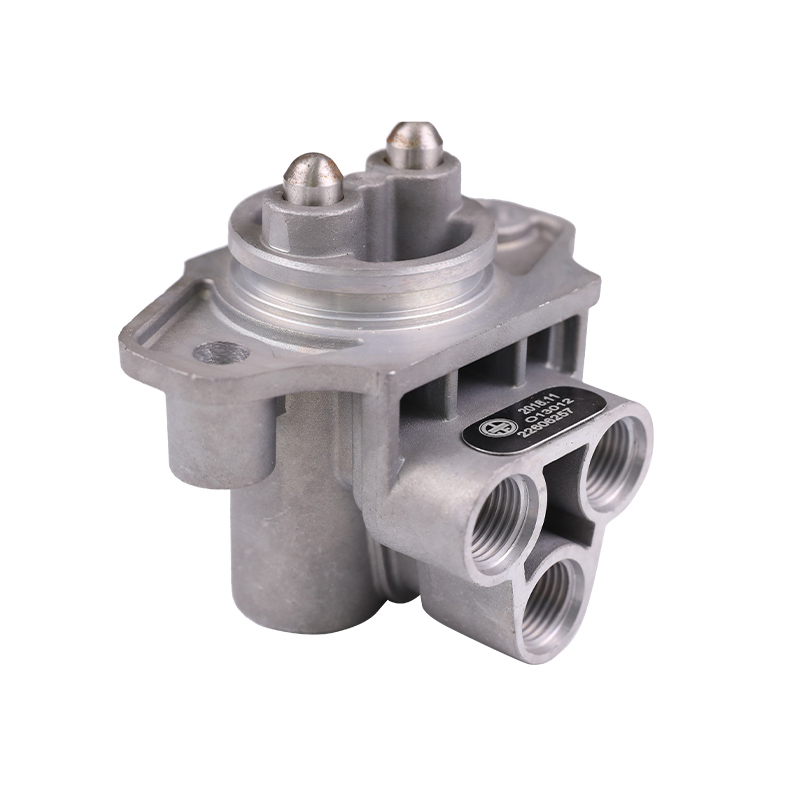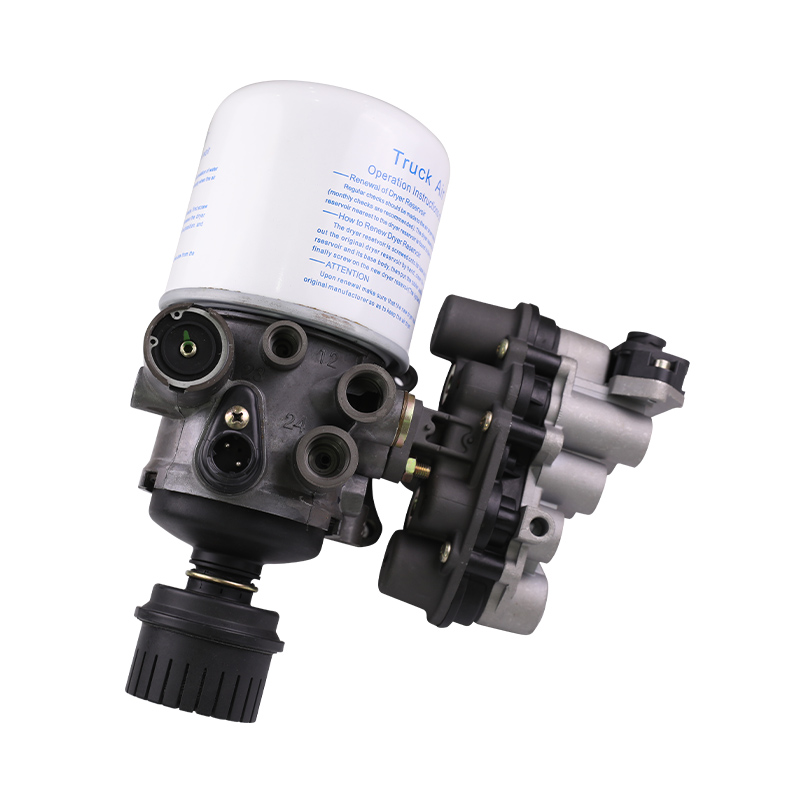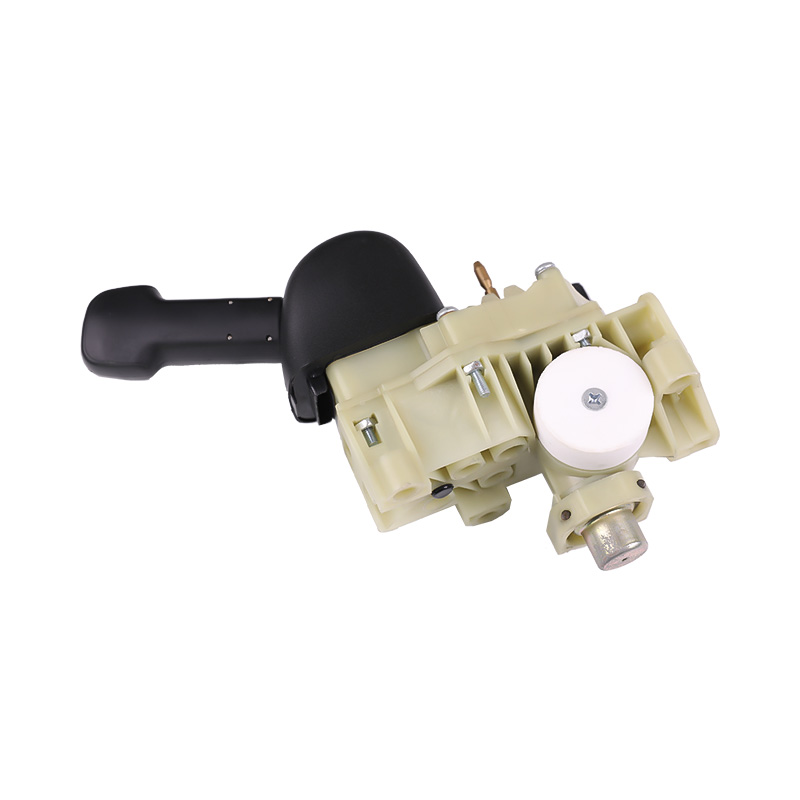In modern vehicle braking systems, multi-circuit systems are widely used in heavy-duty commercial vehicles, urban buses, and special-use vehicles. The handbrake valve plays a core control role in this multi-circuit system, ensuring safe and reliable parking brake operation. Pressure balance is a key aspect of handbrake valve design, directly impacting brake response speed, system stability, and operational safety.
Structural Features of Multi-Circuit Systems
Multi-circuit systems typically consist of a main air circuit, an auxiliary air circuit, and an emergency air circuit. Each air circuit controls a different braking circuit in the vehicle through pressure distribution and regulation. The handbrake valve, located at the core of the system control, connects the various air circuits, transmitting parking brake signals and regulating pressure. System pressure fluctuations can arise from braking operation, air source fluctuations, or environmental factors. The handbrake valve must maintain balanced air pressure under all operating conditions.
Valve Spool Design and Pressure Distribution
The design of the internal spool of the handbrake valve determines how air pressure is distributed across the air circuits. Through various cavities and guide holes, the spool evenly distributes input air pressure to each air circuit while maintaining stable output pressure across each circuit. The professionally designed multi-stage valve core structure ensures smooth pressure transfer between the high-pressure and low-pressure air lines, preventing pressure shock and transient overload, and ensuring uniform braking system response.
Spring and Diaphragm Adjustment
The spring and diaphragm in the handbrake valve are key components for pressure equalization. The diaphragm is sensitive to changes in air pressure and can fine-tune itself with pressure fluctuations, automatically adjusting the valve core position to maintain balanced output pressure. The optimal spring stiffness prevents excessive diaphragm deflection during pressure fluctuations while ensuring reliable return of the valve core. The spring and diaphragm combination provides mechanical pressure feedback, achieving dynamic balancing control.
Check Valve and Buffer Chamber Design
Check valves and buffer chambers are often used in multi-circuit systems to assist the handbrake valve in achieving pressure equalization. Check valves prevent pressure backflow and ensure stable pressure transfer between the various air lines. Buffer chambers absorb transient pressure fluctuations, reducing the impact of air line vibrations on the valve core and improving overall system stability. The rational arrangement of check valves and buffer chambers is crucial for achieving pressure equalization in multi-circuit handbrake systems.
Pressure Detection and Automatic Adjustment
High-end parking brake valve designs are typically equipped with pressure detection interfaces or microsensors for real-time monitoring of pressure across all air circuits. Using pressure feedback, the valve core automatically fine-tunes to maintain pressure balance across all air circuits. This system maintains stable output pressure under high and low temperatures, long-distance driving, or heavy loads, enhancing vehicle braking safety and reliability.
Valve Body Material and Sealing Performance
The selection of valve body materials and seals is crucial for pressure balance. A high-strength valve body ensures structural stability and prevents deformation caused by pressure fluctuations. Seals must withstand high pressure, wear, and temperature to prevent pressure imbalances across all air circuits due to leakage during long-term use. Multi-circuit systems place stringent sealing requirements; even minor leaks can lead to uneven pressure and compromise braking performance.
Environmental Adaptability and Long-Term Reliability
Parking brake valves in multi-circuit systems operate in complex environments, including high and low temperatures, high humidity, and dust. The design must consider the material's thermal expansion coefficient and the temperature-dependent changes in diaphragm elasticity to ensure stable pressure balance. Under long-term use, valve core wear, spring fatigue or seal aging may cause pressure deviation. Regular inspection and maintenance are important guarantees for maintaining pressure balance and system safety.






